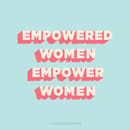Want to start thrifting but don’t know where to start? I’m here to help! This is the ultimate guide to thrifting, where I break the thrifting process down into three simple steps to ensure an easy and eventful thrift trip.
Step 1: What to bring
To prepare ourselves for our thrift trip, we’re going to need a few things. Gloves and hand sanitizer are a MUST. Rubber gloves are a good way to keep any germs, dirt or whatever else is on the items while you’re sorting through them. We don’t know where these clothes came from, so we should come prepared for the worst.
Another thing to ensure you have before you begin is an open mind. You cannot go into a thrift store expecting to find something specific! Chances are, they will not have it and you’ll wind up disappointed.
Headphones are another necessity for our shopping experience. These will make your experience 10 times better, trust me! Screaming children and loud people can make you want to leave, but because we have our headphones, we only hear Rihanna telling us to work.
Now, most thrift stores are going digital with the pandemic happening, but you never know when cash could come in handy, so just bring it. The shop’s systems could be down and if you don’t have cash, how are you going to buy those cute mugs?
And, if you want to bring them, reusable bags are good to have too. The more bags you bring, the more things you can fit into them.
Step 2: How to shop

When you first enter those doors, grab a cart, basket or whatever they have. This will be your best friend while shopping. Thrift stores can be overwhelming sometimes, but don’t fret. I suggest you just take on the store section by section. Going section by section is not a quick process, but it allows you to get all the store could offer. Pick the section where you want to start and begin!
Next, you need to effectively look through each article. If you’re looking at clothes, go through each section hanger by hanger. If it’s plates and bowls, make sure you have seen every plate and bowl there. The same thing goes for records or CDs; you have to flip through each one. You shouldn’t skip anything because you don’t know what you could find if you failed to look. I know this may seem like it would take a very long time, but once you get to your second or third section, you’ll find your rhythm.
When I thrift, I like to use the “just throw it in” method. This means exactly what it says: if you see something you like, throw it in the cart. Even if it’s something you are having issues deciding if you like it or not, just throw it in. It’s way easier to get rid of things you don’t like than it is to hope the dress you want is still where you left it. When using this method, you’ll find yourself having more items than you would like. To solve this, we downsize before we hit the register. I tend to do this with a clothing rack or a reshelving bin where I can put my unwanted items back and not in some random place. If you’re still iffy about some things, try and picture how you would use the item. If you can’t see the picture, don’t get it!
Step 3: What to look for

My favorite thing to look for at thrift stores is special pieces. These pieces are the EXTRA ones—the ones that demand attention. Special pieces make you stand out from the crowd. The beauty of thrifting is that it is very unlikely that someone will have the same things as you, especially if you pick up some special pieces. What could these special pieces be? Literally anything! Thrift stores have some of the coolest selections of items to spice up your closet, home or your music collection. Just look around and find whatever speaks to you.
The last shopping tip I have is to inspect what you are buying before you check out! Because we are shopping second-hand, stains and scratches are inevitable. If there are stains in clothes that you think could be washed out, feel free to purchase but if those stains look like they won’t come out, let’s not buy. If you’re buying electronics, most thrift stores will let you try them out to see if they work.
I hope that the ultimate guide to thrifting will help with any future thrift store visits. I know I use these three steps whenever I thrift, and I have never left a thrift store empty-handed! Remember to bring your necessities, take on the store one step at a time and pick those pieces that speak to you. Happy shopping!
Want to see more HCFSU? Be sure to like us on Facebook and follow us on Instagram, Twitter, TikTok, Youtube and Pinterest!



